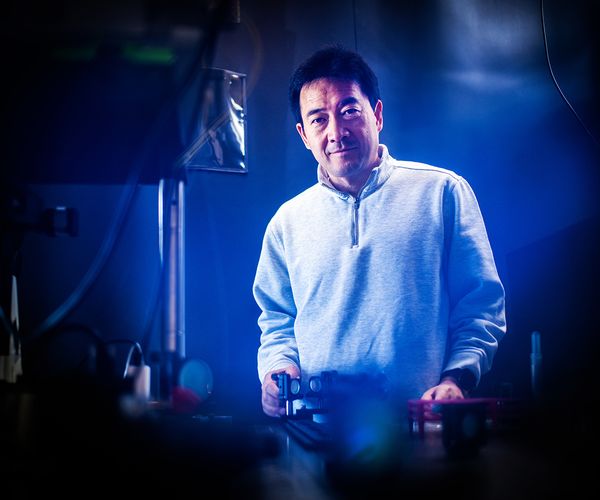Cheng’s computational chemical imaging technique pulls off the “impossible”
For more than two decades, Ji-Xin Cheng has been determined to develop a new way of peering deeper into biology—one that doesn’t rely on dyes to illuminate the insides of cells and tissues.
To visualize what’s happening within cells on the molecular level, scientists have long relied on tagging molecules with fluorescent dyes. Cheng, a Boston University College of Engineering (ENG) professor and Photonics Center faculty member, says that although these “labeling” techniques have vastly contributed to biological research, there’s a limit to how much detail they can reveal about the inner workings of life. The fluorescent labels often obscure the exact location, shape, and other intricate details of their targets.
As an alternative, Cheng’s been interested in seeing the chemical bonds of biological samples without the need for fluorescent dyes. His novel methods might demystify the molecular interactions that spark and then spread cancer and other diseases.
“If we could use the intrinsic chemical bonds within every molecule to visualize biology, we could achieve better molecular information without relying on labeling,” Cheng says. “But this was a very difficult task because the signal we can capture from chemical bonds is many orders of magnitude weaker than the glow of fluorescent dyes. Years ago, people thought this would be impossible to do—but it’s been the great dream at the core of my career.”
Now, Cheng’s dream is becoming a reality.
For the full story, visit the Photonics Center website.
